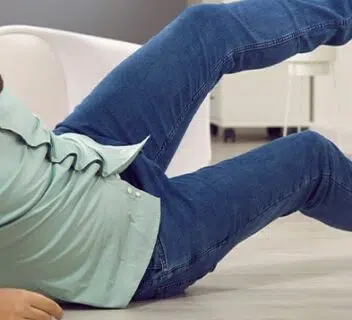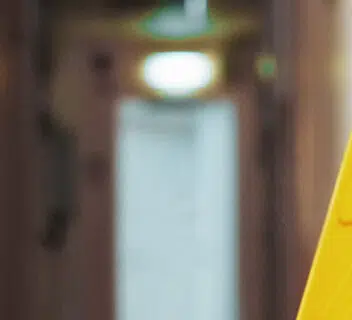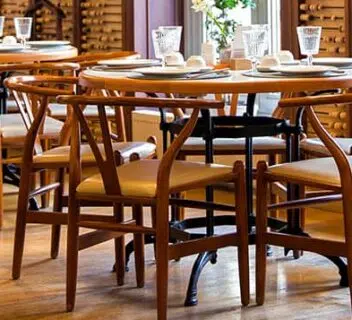Slips and Falls Common Causes: How to Recognize and Avoid Everyday Risks
If you’re injured in a slip and fall or a trip and fall, then chances are that you’re at least a little bit confused and a little bit overwhelmed about what to do next. You may simply want to learn more about these sorts of accidents and what causes them — by learning slips and falls common causes, for example, you could potentially identify the various ways in which the defendant was responsible for your injuries. This would give you the confidence necessary to explore the possibility of a slip and fall claim — with an experienced slip and fall injury lawyer by your side, of course.
The National Floor Safety Institute provides valuable statistics and information related to slip and fall accidents, including data on causes, emergency room visits, and economic costs.
To that end, let’s explore slips and falls common causes, as well as some other issues common to slip and fall accidents throughout the United States. Read on to learn more about the basics!
What are the most common causes of slip and fall accidents?
The most common causes of slip and fall accidents are:
- Wet and uneven surfaces (i.e., liquid spills), which are responsible for more than half of reported slip and fall cases
- Poor lighting
- Debris on the floor
- Loose or damaged flooring (i.e., loose carpeting, damaged floorboards, etc.)
- Inadequately-designed safety devices (i.e., too-wide staircases without a middle handrail)
- And more
Though debris left on the ground, or spills, are the most “straightforward” type of slip and fall accidents to understand, many people don’t realize that one of the slips and falls common causes is poor design! Businesses have a responsibility to construct and maintain their properties according to various codes, as well as basic safety protocols. Failure to do so can lead to a legitimate slip and fall case from the fall accident victims who were affected.
A wide staircase with no middle rail may not seem dangerous to a young person, but to an older person who has deteriorated balance issues, it can lead to a dangerous tripping incident that causes broken bones and lifelong impacts. That’s why the burden is on property owners to implement safety devices and maintain their properties in a manner that is suitable for premises entrants. The property owner doesn’t have to make everything “perfectly safe,” but they have to take reasonable steps to make their property safe in accordance with modern-day design norms.
Fall accidents commonly occur due to mistakes like this!
What are the human factors that contribute to slips, trips, and falls?
Human factors that can contribute to slip and fall accidents include, but are not necessarily limited to the following:
- Intoxication
- Failure to adhere to occupational safety protocol (i.e., missing inspections, not correcting slip and fall hazards)
- Failure to put up signage to warn premises entrants of the slip and fall hazard
- Failure to wear proper safety equipment in a dangerous environment
- Refusing to “clean up” after oneself
- Failure to let employees know that there has been a spill
- Cost-cutting measures at a given premises
- And more
Falling accidents occur in various industries, particularly in construction, mining, and maintenance jobs, often due to factors like poor lighting, improper training, and various environmental hazards. Slips and falls common causes are not limited to one specific industry — you may be surprised just how widespread these issues are!
For example, imagine that you trip and fall and injure yourself outside of a restaurant. The steps outside have inadequate lighting, so you “missed” a step, causing you to trip and fall to the ground. When your attorney begins to investigate the incident, it turns out that the restaurant owner knew about the dangerous hazard but didn’t want to correct it because it would be an extra cost that he’d have to take on. That’s a truly “human factor” — human greed, really — that contributed to your injuries.
Why do I slip so easily?
It could be a medical issue that you have — poor balance and motor skills could be a result of your genetic conditions, or any number of possibilities! But something to keep in mind is that your “predisposition” towards slipping easily will not necessarily count against you in a slip and fall lawsuit for damages.
That’s because, under the law, defendants have to deal with injured plaintiffs “as they find them.” If you’re uniquely fragile, or uniquely vulnerable in some way, it does not restrict you from seeking compensation in slip and fall accidents!
Avoiding open and obvious hazards
In slip and fall accidents, many defendants will argue that they are not liable for your damages because you did not avoid an “open and obvious” slip and fall hazard.
For example, if a reasonable person would notice that there is a slipping hazard in front of them (i.e., there is a very large, bright, colored liquid spill ahead of them in a well-lit area), then the defendant could fairly argue that the hazard was “open and obvious” and that you either: did notice the hazard but chose to engage it anyways, or did not notice the hazard but should have noticed it if you were being reasonable.
You can argue against this defense in a number of different ways, but to do so, you’ll want the assistance of an experienced legal representation who understands how to navigate nuanced issues like this when it comes to slip and fall accidents and related accident cases.
Inspection schedules: a common defense argument
In the slip and fall accident context, many defendants will argue that they inspected the premises within a reasonable timeframe, and there was no “slip and fall hazard” when they conducted the inspection — and as such, they argue that they cannot be held accountable for a hazard that occurred following the inspection (and before the next scheduled inspection).
After all — we can’t be expected to inspect a given premises so frequently that it disrupts business and creates a large additional cost. This may all seem a bit confusing, so let’s use a basic slip and fall accident example to simplify and clarify.
Suppose you’re injured when you slip and fall on a water spill at a retail store. When you sue the retailer, they argue that they should not be held liable. Why? Because their employee conducted a floor inspection 45 minutes before you slipped and fell — and during that inspection, there was no water spill.
You then argue that they should have inspected more frequently. They counterargue that in their industry (i.e., non-F&B consumer goods retail), there is an expectation or culture of inspection that would require them to inspect more frequently than the once-per-hour inspections they’re already conducting. To do more would be to violate the norms of their industry and increase their costs unnecessarily.
Given these facts, a court is likely to take the defendant’s side and reject your claim for damages.
To avoid this outcome, you and your attorney will have to introduce other evidence — potentially linking the defendant to industries with more stringent inspection protocols, or even showing that there were other slip and falls in the past and that they should have heightened their inspection protocols in response to prevent another similar accident.
Damages in a slip and fall accident case
Damages in a slip and fall accident (and in any other injury-causing accident) are based around the claimable losses that you’ve suffered as a result of the defendant’s negligent, reckless, or intentional misconduct. These claimable losses can be quite varied, and include the following loss categories:
- Lost wages
- Loss of earning capacity
- Loss of property
- Loss of enjoyment of life
- Loss of companionship
- Medical expenses (i.e., medical bills that account for whatever comprehensive medical treatment you’ve received)
- Pain and suffering
- And more
High medical bills and potential expenses that a plaintiff may recover as a result of fall injuries can also be significant.
It’s worth keeping in mind that there’s no one-size-fits-all damages claim. Every case tends to be different, because the losses can vary due to the particular circumstances of the accident, and of the individual who suffered injury.
For example, if you get into an accident when you’re unemployed, then your lost wages claim will be near-zero. By contrast, if you get into an accident when you’re gainfully employed, and you have to take a few months off from work to recover, then your lost wages claim is likely to be substantial. And so these lifestyle differences can lead to major differences in compensation amounts!
Contact 1-800-THE-LAW2 for a Free Legal Consultation
If you’ve been injured due to a slip and fall accident, then you could be entitled to sue for damages under the law. Navigating these sorts of disputes isn’t always simple, however, as there are many unique challenges and opportunities associated with slip and fall accident disputes.
For example, the defendant might argue that they did inspect the premises within a reasonable timeframe, or that the hazard was so obvious that you should have noticed the hazard and avoided it. These (and other issues) can be difficult to process and argue against, especially if you are a first-time plaintiff. As such, it’s important that you connect with an experienced slip and fall lawyer for guidance.
Contact 1-800-THE-LAW2 for a free legal consultation with a qualified personal injury lawyer in our network. During this initial consultation, you’ll be able to discuss your case in detail and learn about your strategic options. If you decide against moving forward, that’s okay, too — there is no obligation to continue if you don’t want to. So pick up the phone and call us today to get started!
We look forward to assisting you.




